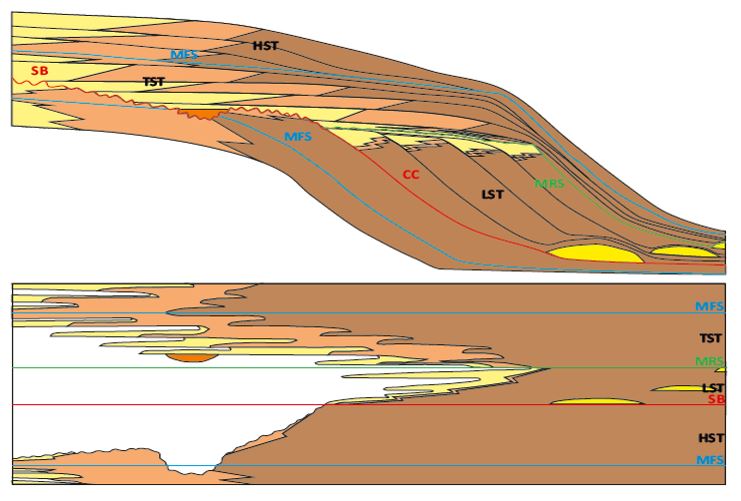This is an old revision of the document!
Table of Contents
Why Is Sequence Stratigraphy Important?
- It allows synchronous events to be correlated through multiple data sets.
- It relies on the analysis of changes in depositional facies and geometry of strata and the identification of key surfaces which allows the chronological order of basin filling and erosional events to be determined.
- Sediments are classified into packages based on the regime of relative sea level they were deposited under (see figure below), rather than relying on lithostratigraphic terms to classify sediments.
- Sequence stratigraphy greatly enhances the ability to accurately predict sediments outside of data control – important for prediction of Source, Reservoir and Seal facies.

Schematic view of a sequence in a clastic environment. The figure at the top is drawn according to rock thickness. Sediments are grouped together in packages (“systems tracts”) deposited during phases of sea-level cyclicity, separated by different sequence surfaces. The lower image shows the same packages and surfaces, this time drawn according to the (upwards) passage of time. Such images form the basis for Chronostratigraphic Charts.
Essentially it is a way of classifying and arranging sediments based on the relative position of sea level at the time of deposition. Because global eustatic sea level change is cyclic, it is predictable, therefore the distribution of sediments thus deposited are likewise predictable.
